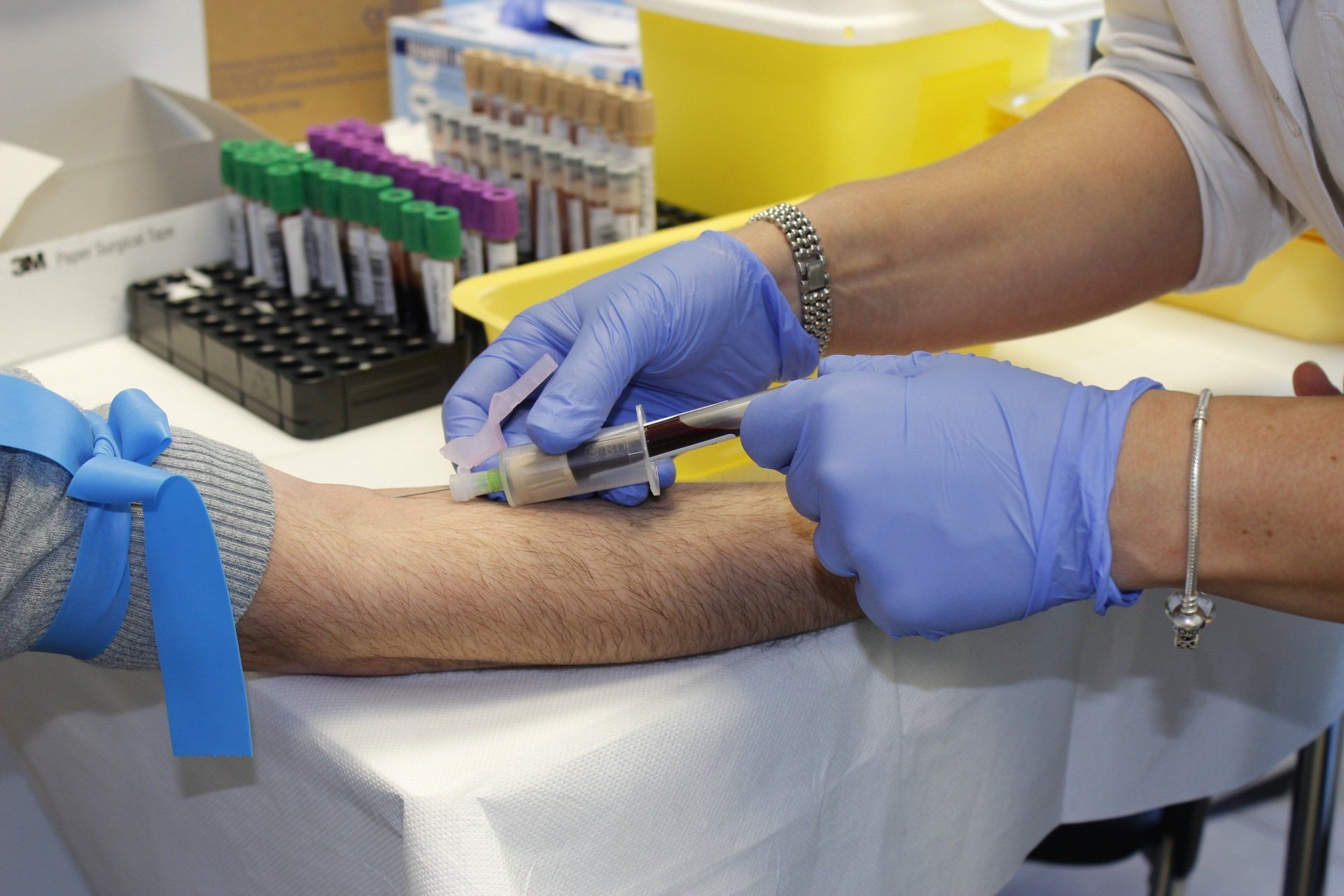COVID-19: Impact on mental health and stress management
The Recruitists
Covid 19 stress blog
COVID-19 pandemic spread at the end of 2019 worldwide, threatening the health of
countless worldwide. It is a disease with pneumonia-like symptoms and of unknown etiology.
COVID-19 has affected more than 6 million people worldwide. This condition is stressful for
all age groups and has changed people’s lives socially and economically. The COVID-19
pandemic has been fearful and stressful due to the high mortality rate and factors like
economic instability, unemployment, and insecurity.
The main reason for COVID-19 pandemic stress is that it has spread globally, and no exact
treatment or vaccination with 100% efficacy for all variants is available. So it is normal for
people to experience a wide range of thoughts and feelings during this unpredictable
situation.
Stress can cause feelings of fear, sadness, worry, difficulty in sleeping, frustration, and loss of
concentration and decision-making. The level of stress can be episodic, acute, or chronic.
Persistent stress can lead to chronic stress, which causes a variety of diseases like stroke and
heart problems. Stress makes us lazy, demotivated, and loss of interest in things. People are
facing stress, fear, anxiety and depression. Actions such as social distancing and lockdown
are necessary to reduce the chances of becoming infected, but this can make people lonely,
stressed, and increase anxiety. Stress causes physical reactions like headaches, trouble
sleeping, pain, irregular bowel movements, loss of appetite, nausea, flushed skin, and fever.
The most significant impact of stress on humans is worsening mental health, which could
lead to drug use and increase alcohol intake.
As the variants of coronavirus continue to spread, anxieties about COVID-19 also increase. The
best way is to avoid stress is to keep your mind fresh by following these steps:
Getting plenty of sleep,
Morning walks,
Inhaling fresh air,
Stretching your muscle so you can relax your body,
Healthy eating,
Get preventive measures as recommended by your healthcare professionals.
During the COVID-19 pandemic, technology has dramatically evolved. New video
apps along with gaming systems are being introduced. These apps allow virtual
meetups and playdates with friends. These are good to get along with your family and
friends, catch up, play board games and watch series and movies.
During lockdown periods, it is important to enjoy your “me” time. You can relax at this time as
this is your time. It will help you to unwind your skills which have diminished over time. You
can do your favorite things such as:
Dance,
Exercise,
Yoga,
Eat your favorite snack,
Watch your favorite series,
Puzzles solving,
Play cards and board games.
COVID-19 pandemic has a significant impact on students’ learning and practice. Many
students have developed psychological problems which are affecting their learning abilities
and overall personality. Educational systems of physical classrooms are switched to virtual
classrooms. This system can be hectic for students as there are many issues in virtual
learning, such as:
Internet connection problems
Computer availability
No hands-on practice
Stressing of eyes due to long screen times
Health problems
All these factors lead to stress as there is no physical coordination in students, and their
confidence level is also affected. For the management of anxiety, students should interact
with each other through virtual meetings. Students should balance their studies, friends,
social activities, and creative learning to cope with stress. If students cannot overcome their
anxiety, they should seek professional help to focus on their studies for effective learning.
Adults can somewhat control their stress and fears, but children can feel more afraid and
anxious about COVID-19. It’s an alarming situation for parents if their child feels stress and
anxiety at this early age. So parents must listen to their kids and calm their worries. Parents
should educate their kids about the virus with accurate information and guide them through
social distancing, wearing a mask, washing, and sanitizing their hands not to catch the virus.
Parents can also engage their kids in mindful and creative activities like the following:
Coloring
Painting
DIY
Sketching
Gardening
Fear and stress of being COVID-19 positive can be overwhelming and cause the emotion of
being lonely. If you do get a positive reading, you don’t have to isolate yourself from the
world entirely. You can cope with this deadly virus by connecting your loved ones using
social media, such as WhatsApp. You can video call them and enjoy yourself virtually with
your family, this is an excellent way to combat stress and anxiety.
Stress can affect your immune system, which increases the likelihood of catching the virus. You
can manage your stress by the catharsis of body and mind. You have to sit quietly, close your
eyes and free your mind from unnecessary thoughts and focus on your breathing. This practice
will refresh your mind and fill you with a new determination for achieving your goals. By
learning a creative skill like painting or gardening, you can use your creative ideas to color your
surroundings. It will help you to focus and create something new. The best thing to do is to be
careful of yourself and others around you, follow recommended guidelines and look after your
health, physical and mental.
Written by Kainat Fayaz, Medical student at King Edwards Medical University.
References:
Guessoum, S. B., Lachal, J., Radjack, R., Carretier, E., Minassian, S., Benoit, L., & Moro, M. R. (2020). Adolescent
psychiatric disorders during the COVID-19 pandemic and lockdown. Psychiatry research, 291, 113264.
https://doi.org/10.1016/j.psychres.2020.113264
Sun, T., Guo, L., Tian, F., Dai, T., Xing, X., Zhao, J., & Li, Q. (2020). Rehabilitation of patients with COVID-19. Expert
review of respiratory medicine, 14(12), 1249–1256. https://doi.org/10.1080/17476348.2020.1811687
Shuja, K. H., Aqeel, M., Jaffar, A., & Ahmed, A. (2020). COVID-19 Pandemic and Impending Global Mental Health
Implications. Psychiatria Danubina, 32(1), 32–35. https://doi.org/10.24869/psyd.2020.32
Steardo, L., Jr, Steardo, L., & Verkhratsky, A. (2020). Psychiatric face of COVID-19. Translational psychiatry, 10(1), 261.
https://doi.org/10.1038/s41398-020-00949-5
Seyed Hosseini, E., Riahi Kashani, N., Nikzad, H., Azadbakht, J., Hassani Bafrani, H., & Haddad Kashani, H. (2020). The
novel coronavirus Disease-2019 (COVID-19): Mechanism of action, detection and recent therapeutic
strategies. Virology, 551, 1–9. https://doi.org/10.1016/j.virol.2020.08.011
Yesudhas, D., Srivastava, A., & Gromiha, M. M. (2021). COVID-19 outbreak: history, mechanism, transmission,
structural studies and therapeutics. Infection, 49(2), 199–213. https://doi.org/10.1007/s15010-020-01516-2
Pollard, C. A., Morran, M. P., & Nestor-Kalinoski, A. L. (2020). The COVID-19 pandemic: a global health
crisis. Physiological genomics, 52(11), 549–557. https://doi.org/10.1152/physiolgenomics.00089.2020
Salian, V. S., Wright, J. A., Vedell, P. T., Nair, S., Li, C., Kandimalla, M., Tang, X., Carmona Porquera, E. M., Kalari, K. R., &
Kandimalla, K. K. (2021). COVID-19 Transmission, Current Treatment, and Future Therapeutic Strategies. Molecular
pharmaceutics, 18(3), 754–771. https://doi.org/10.1021/acs.molpharmaceut.0c00608
Flanagan, E. W., Beyl, R. A., Fearnbach, S. N., Altazan, A. D., Martin, C. K., & Redman, L. M. (2021). The Impact of
COVID-19 Stay-At-Home Orders on Health Behaviors in Adults. Obesity (Silver Spring, Md.), 29(2), 438–445.
https://doi.org/10.1002/oby.23066
Son, C., Hegde, S., Smith, A., Wang, X., & Sasangohar, F. (2020). Effects of COVID-19 on College Students’ Mental
Health in the United States: Interview Survey Study. Journal of medical Internet research, 22(9), e21279.
https://doi.org/10.2196/21279
Wosik, J., Fudim, M., Cameron, B., Gellad, Z. F., Cho, A., Phinney, D., Curtis, S., Roman, M., Poon, E. G., Ferranti, J., Katz,
J. N., & Tcheng, J. (2020). Telehealth transformation: COVID-19 and the rise of virtual care. Journal of the American
Medical Informatics Association: JAMIA, 27(6), 957–962. https://doi.org/10.1093/jamia/ocaa067
Shah, M., Sachdeva, M., & Johnston, H. (2020). Eating disorders in the age of COVID-19. Psychiatry research, 290,
113122. https://doi.org/10.1016/j.psychres.2020.11312

By The Recruitist
•
May 26, 2021
Since their coming to market in 1965, Glucose testing strips were the only convenient way of home testing for diabetics. Now almost 5 decades later, it seems that the drug market has taken the concerns of diabetic patients on board and release a CGM system to the UK market. Even though versions were available in the US since 1999, the trend hadn’t travelled across the ocean until now. There are however still strict guidelines for NHS prescribing and the qualifying criteria still doesn’t put it as a first line option, but availability has continued to grow, as has prescribing. FGM has been the standard for over 50 years, and although they have their own disadvantages, they continue to be reliable and cost effective. They have, however proven to be harder to use in paediatric and geriatric diabetes monitoring as well as among those with other health conditions. Now with the introduction of the Freestyle Libra Sensor into the UK market we are not only seeing the increase in prescribing, training on the use and advantages, but also the price decreasing and the manufacturer, Abbot have also made it easier to order and obtain the device. With the introduction of automatic readings calibrated with the auto pump insulin systems, could see the finger pricking and manual readings of blood glucose levels obsolete within a few generations. We must however ask why it has taken so long for this technology to be adopted within Europe and as to why the costing is affecting the prescribing habits. If the cost of test strips, lancets, insulin device pens and the blood glucose machine is totalled up over the course of a diabetic’s lifetime vs the cost of automatic reading devices, there will be marginal savings, but the ease of use for the patient will be vast. We must also consider the waste and clinical risks involved in patients administering the wrong doses of insulin after misreading figures. The automatic pump delivery system would eradicate this and would make the sharing of blood glucose readings with healthcare professionals, as well as compliance easier, streamlined and safer for patients. In conclusion we can see a slow, but gradual improvements in the products for management on patients with diabetes. As more manufacturers bring to market generic alternatives of the newer variants, we will see greater prescribing and usage leading to greater compliance, fewer errors in readings and insulin usage and ease of use for end user.

By The Recruitist
•
January 31, 2020
The choices to be becoming self employed are unlimited, as is how you go about it. Is the pharmacy market sustainable for a ‘locum’ dispenser? I will go over some of the pitfalls and benefits of setting up for yourself, and hopefully avoid some of the most commonest errors. This type of commitment will require discipline as you are not only responsible for paying your own taxes and national insurance, you also need to adjust to not having paid holidays and other employed benefits. This way of earning can either provide you with a stable source of income or leave you out of pocket if you fail to plan well. Just as with a contracted post, self employment can fall short if the economy or the pharmacy sector take a hit. Firstly, we must ask ourselves the question, is this role for me? To be able to answer this question we have to go over some of the requirements. How long have you been in this sector? How many PMR systems do you know how to use? How good are your customer service skills? How much experience do you have in pharmacy? This is not only in the dispensary, understanding the sector and how businesses actually operate. Of course this is not an extensive list of requirements, but what you must keep in mind is when you’re locuming at a new store, you will need to go beyond just labelling or dispensing. Serving customers is more than just putting purchases through the till. On the day whilst you are booked, you are a representative of that company, as such you should be driving their sales, sign ups, pushing for services or other ways to make the business more profitable. Being professional and knowledgeable will increase the patients confidence in you as much as being approachable. Relying on just an agency or two is also not viable long term. With the market picking up and dropping off at different times of the year you could find that only using agencies leaves you with more downtime than booked up months. It is wise to try to make your own contacts with more flexible places such as independent pharmacies or private hospitals. With that being said there are more than enough agencies out there, so staying on good terms will work in both your favours. Do you have an in-depth overview of the pharmacy market? It is vital to stay on top of training and topping up your knowledge all the time. CPPE is a great resource for training and as a locum you will have core training you will need to have completed. But doing the bare minimum in this sector will not cut it. There are currently more locums than shifts in certain areas and being well trained will help ensure you are booked again and again. The whole world saw changes beyond anyone's imagination with Covid-19 rampaging across the globe. This in turn has had unimaginable negative impacts on the locum dispenser market with many abandoning self employment in favour of more stable, fixed employment. If your answers so far to the questions above have been more positive than negative, and you have weighed up the options financially, it could be a good time to explore the self employed market. As we have only touched on the points above, there will be full length pieces on each to fully explore the pros and cons, and how to avoid the common mistakes.
We'll find the right candidates for you.
We'll help you find the talent you need, so you can focus on running your business.
© 2025
All Rights Reserved | Recruitists | Privacy Policy
Website Design Bespoke Digitech
